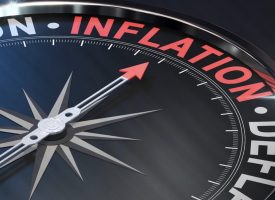As we await the outcome of the two-day Fed Meeting, today a legend in the business sent King World News a powerful piece discussing how absolutely insane the stock market crash in in China.
From Art Cashin's notes: Shanghai plunged the equivalent of 1485 Dow points (on Monday). The 75 to 1 negative breadth in Shanghai is positively mind-boggling, exacerbated by the fact that hundreds and hundreds of other stocks never even opened due to extreme selling pressure. Those figures convey the image of a selloff that turned into a stampede when the mob realized that "Daddy" had not shown up to stem the tide.
Overnight And Overseas – Shanghai was relatively calm overnight with the operative word being relatively. In the morning session, it plunged 5% (875 Dow points). In the afternoon session, buying of government owned banks cut the day's closing loss to 1.7% (295 Dow points). The small cap index did not do as well.
The salvage job in Shanghai allowed Tokyo to cut early losses and close flat. Hong Kong is up a smidge. Europe is in a celebratory mode with most equities up 1.5%. That is despite new rumblings out of Greece where their bonds and ETFs are getting pounded even with the markets closed.
U.S. futures look better while crude, gold the Euro and the ten year all are lower.
Consensus – Shanghai salvage should allow the U.S. market to pop a bit and eat into the short-term oversold condition produced by the five day selloff. Tom DeMark is looking for the Shanghai to drop over 14% in the next three weeks, making comparisons to the U.S. in 1929.
Best to keep a sharp eye on crude and the yield on the ten year. Stick with the drill – stay wary, alert and very, very nimble.
Also a note from Raymond James below:
Piece By Andrew Adams Sent From Jeffrey Saut, Chief Investment Strategist at Raymond James
July 28 (King World News) By Andrew Adams (Raymond James) – "Going back to the beginning of 1900, there has never been another year where the DJIA's YTD return flipped between positive and negative more often. The prior record was 20 times which occurred both in 1934 and 1994. This year, it's only July and the DJIA has already eclipsed those levels." …Bespoke Investment Group
This whole stock market thing can be tough sometimes. Actually, that's not necessarily true; if your time horizon is long enough and you don't let your emotions get the best of you, it can actually be quite easy. For instance, unless your first foray into stocks has been in the last couple of months, you would have made money by buying at any time in the history of the market as economic progress has driven company values higher over the years.
However, since human beings just love to make things more difficult than they need to be, people like me still spend countless hours attempting to figure out Mr. Market's next move while he, in turn, does his best to thwart our attempts. And he is certainly not making it easy at the moment, with the major averages not really providing a true indication of what has been going on under the surface. As we have frequently mentioned in our commentaries, the breadth across stocks is just not good right now, meaning it's quite likely that you have seen your individual stock positions go down over the last few months despite the market-cap-weighted S&P 500 never retreating too far beneath its all-time high.
Even now, after five straight down days, the index is still less than 4% away from its May 20th peak and has yet to break below the early July lows. But if you drill down and look at the internal stats, the picture is not nearly as rosy. More than 13% of stocks on the New York Stock Exchange are at 52-week lows, which is about 6 standard deviations above the average over the last three years (1.62%) and an extreme only seen one other time during said period (last October when the S&P 500 was percentage points away from a 10% correction).
This dichotomy has created what I believe to be the biggest question about the stock market right now – have we already experienced a stealth correction in the majority of stocks that will soon come to an end or will the market leaders finally succumb to the weight of the laggards and join in on the sell-off? The answer to this could end up being worth at least $2.2 trillion, which is how much money would essentially be wiped out of the stock market if we finally get the much-discussed 10% correction in the overall market (the total U.S. stock market capitalization was $22.5 trillion as of June 30, according to the Center for Research in Security Prices).
There is a chance that stocks as a whole can bottom out here in the short term and, as a result, the averages can finally break out to new highs and stay there. However, I am becoming increasingly concerned that the leaders may first need to undergo a bout of selling to drive out some of the remaining excesses in the market. This latter case would be consistent with what Jeff Saut has been saying in these commentaries, and, while painful, might actually be constructive for the health of stocks.
There is a tremendous amount of money on the sidelines right now waiting for a meaningful dip, and a sell-off in the S&P 500 might be the catalyst required to put that cash to work (a recent BAML fund manager survey indicated the highest cash position since after the Lehman Brothers bankruptcy in 2008).
It wouldn't surprise me to get a small bounce here considering the S&P 500 is right at its 200-day simple moving average and has gone down five days in a row, but I'm not sure this most recent dip has done enough to rebuild the kind of demand that will be required to break us out of this seven-month sideways pattern. The NYSE Common Stock Only Advance/Decline Line (see chart on the first page) is breaking down to new lows, too, and until that turns around, I think things are going to continue to be tough. ***ALSO JUST RELEASED: Chaos, Propaganda And Why This Global Panic Will Be So Brutal CLICK HERE.
© 2015 by King World News®. All Rights Reserved. This material may not be published, broadcast, rewritten, or redistributed. However, linking directly to the articles is permitted and encouraged.
The audio interviews with Robert Arnott, Eric Sprott, John Mauldin, Stephen Leeb, Egon von Greyerz, Nomi Prins, Gerald Celente, Andrew Maguire, Michael Pento, Dr. Paul Craig Roberts, Rick Rule, Bill Fleckenstein, David Stockman, Chris Powell, Dr. Philippa Malmgren, Marc Faber, Felix Zulauf and Rick Santelli are available now and you can listen to them by CLICKING HERE.








